Say what? Yeah, I know. A little odd for this sacred space, but not really. Alembic is the most innovative musical instrument maker on earth, especially when it comes to those never duplicated features:
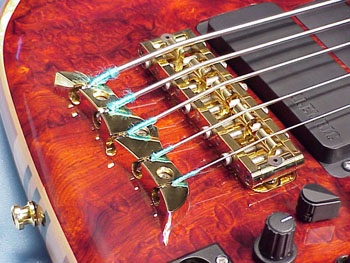
Anchor the strings in a block of brass (and that's just the visible component, considering the supporting infrastructure of sustain blocks and lams). Shaped like a bird, of course. Slotted, for easy string changing. And that Leonardo Da Vinci-level marvel of engineering: the Alembic bridge.
Perfection is subjective, but that bad boy gets my vote. It does precisely what it's supposed to do, to perfection. And it's absolutely unique.
I'm fascinated with the progression of innovations, especially when it comes to the evolvement of something to its highest form. Like the Alembic bridge.
Here is a 1933 Vivi-Tone electric guitar, the great grandpappy of our electric guitars. It has features so wildly ahead of their time that nobody has even come close to duplicating them. I consider it a relic of a mind like Tesla, Da Vinci and Beethoven all rolled into one.
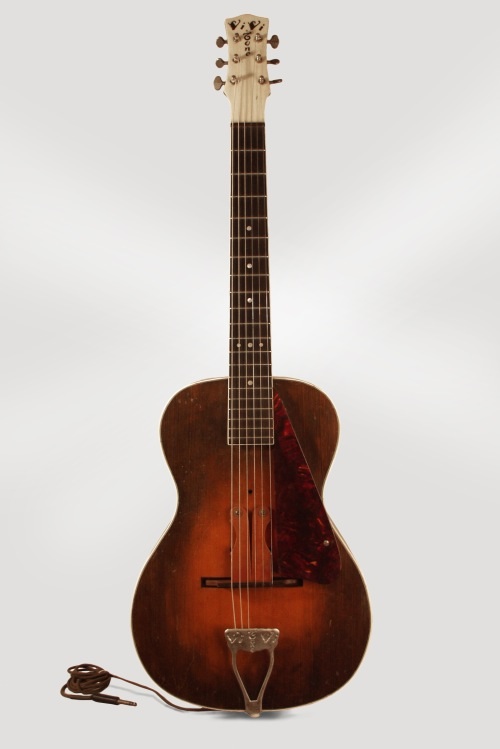
The key word is electric. To put that in perspective, the amp that came with this guitar was battery powered, because they didn't have AC power in most of the country!
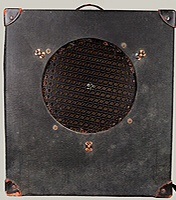
Lloyd Loar also thought it was cool to be able to rock out anywhere you wanted to, of course. Consider for a moment that it was nearly half a century before another comparable amp came along:
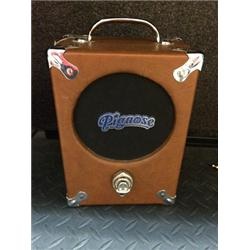
To put the era in our perspective, imagine if electricity had been invented around 1985. 95% of the country is unpaved. Tone controls don't exist yet. And the Great Depression started in 2012.
The guitar has such unique features as a sliding drawer for the electronics, built into the upper bout:
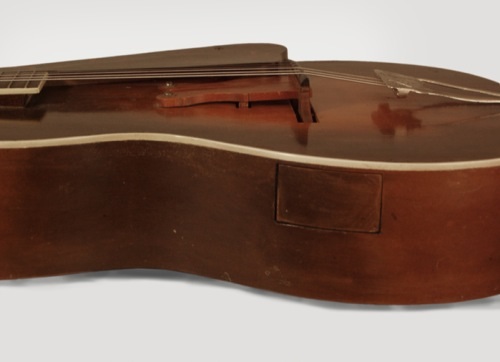
Starfire, anybody? Wouldn't that be easier than squeezing it all in through f-holes? I've never seen it on any other guitar, yet it's such a simple, effective solution.
It's most unique feature is the bridge, which allows the player to manually select full electric, full acoustic or anywhere in between. You're not actually looking at the soundboard, by the way. That is on the back of the guitar.
To quote the seller;
quote:The electronics are mounted in a removable drawer which slides out of the bass side of the rim, with the signal transmitted from the wooden bridge to a metal plate sensed by the coil of the pickup beneath. The bridge has another highly eccentric feature-two pivoting wooden arms screwed at their front ends to the top pass under the bridge top and via a small block of wood transfer vibration to the guitar's back, which was intended to be the primary soundboard!
The bridge on this particular Vivi-Tone (serial #215) is different than any other that I've ever seen. For comparison, here is #300 from the same year, at the
National Musical Instrument Museum:
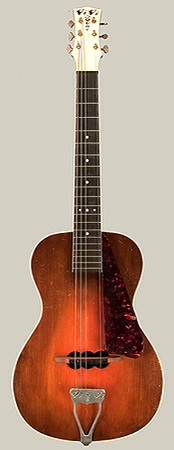
quote:This guitar is based on Loar's U. S. Pat. 2,020,557 (filed 1934, awarded 1935), in which electric amplification is combined with an acoustic guitar body. The design offered a player the option of switching between electric and acoustic amplification, or combining both, with metal posts through the bridge that transfers vibrations from the strings to the bar-armature. With the posts raised, the bridge comes in contact with the soundboard for exclusively acoustic amplification; with the posts lowered to contact the metal bar-armature, both acoustic and electric amplification is engaged, and with the posts lowered completely, the bridge is lifted off of the soundboard and supported only by the bar-armature for exclusively electric amplification. The back of the guitar, made from arched spruce, with two f-shaped soundholes, incorporates another of Loar's ideas, covered more extensively in U. S. Pat. 2,046,331 (filed in 1934 but awarded in 1936), to use the back of the instrument as a second soundboard by transferring bridge pressure from the top.
Loar only worked at Gibson for five years. At some point in 1924, Gibson records show that he made the first solidbody electric guitar in history, fitted with an electrostatic pickup. A full ten years before the
Rickenbacker frying pan lap steel. Unfortunately, that guitar has never turned up (yet) and no pictures of it exist.
Loar's successor at Gibson, Guy Hart, patented a pickup system heavily influenced (some would say stolen) from the Vivi-Tone pickup, here on the EH-150 electric Hawaiian guitar:

Note the coil has been detached for the photo. The next step in innovation was instead of sliding the coil over the metal stanchion attached to the magnetic plate, the coil was wound around a magnet! That was the iconic Charlie Christian pickup. Here is the one from
Hank Garland's '55 Gibson Byrdland 
Lloyd Loar was a genius who went to work for Gibson shortly after the corporation that bought Orville Gibson's surname ditched every single one of his innovations (hollow neck, back and sides carved from a single piece of wood, carved top etc.) and introduced a turn-of-the-century form of group sex known as
the mandolin orchestra. (SFW)
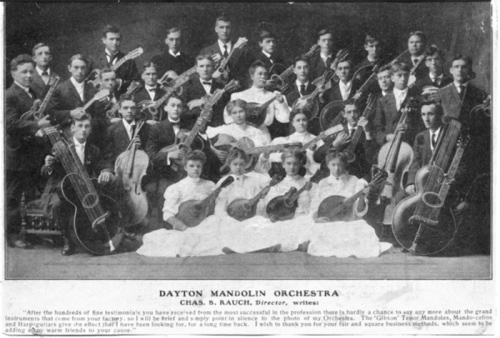 Mandolin orchestras
Mandolin orchestras (